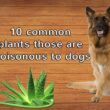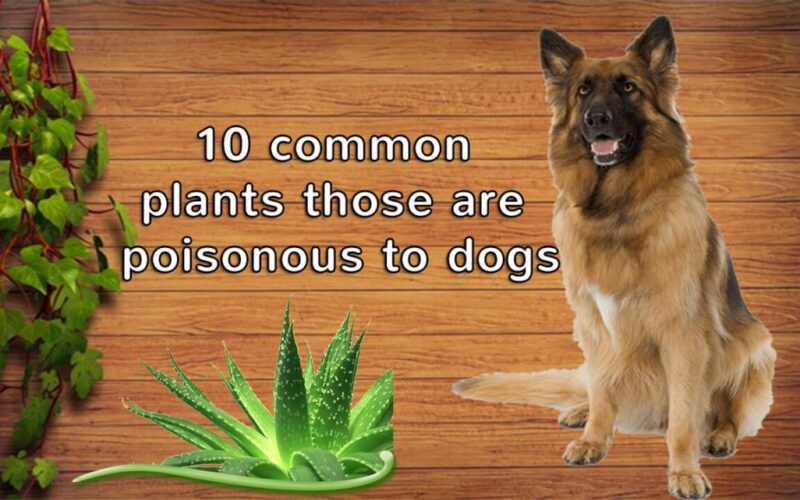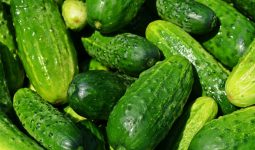Texas’s diverse landscape harbors beautiful plants that can pose serious threats to your canine companion. With over 7,400 plant species native to the Lone Star State, some of the most common ornamental and wild plants can cause severe poisoning or death in dogs.
Understanding which plants to avoid and how to respond to potential poisoning could save your dog’s life.
Every year, the ASPCA Animal Poison Control Center receives thousands of calls about plant poisoning in pets, with many cases involving Texas residents.
The warm climate and extended growing seasons mean these dangerous plants remain accessible to curious dogs year-round, making awareness crucial for every dog owner.
Sago Palm

The sago palm (Cycas revoluta) stands as one of the most lethal plants for dogs in Texas. Despite its name, this ancient plant isn’t actually a palm but a cycad that has remained virtually unchanged for millions of years. These popular landscape plants thrive in Texas’s warm climate and are commonly found in residential yards, parks, and commercial landscaping.
Every part of the sago palm contains cycasin, a potent toxin, but the seeds contain the highest concentration. Just one or two seeds can kill a medium-sized dog. The plant’s appeal to dogs often proves fatal – the seeds have a slightly sweet taste that attracts curious pets.
Important Note: Sago palm poisoning has a mortality rate of 50-75% even with aggressive treatment, making prevention absolutely critical.
Symptoms of Sago Palm Poisoning
Initial symptoms appear within 15 minutes to several hours after ingestion and include vomiting, diarrhea, loss of appetite, and lethargy. As the toxin progresses through your dog’s system, more severe symptoms develop: jaundice (yellowing of the gums and eyes), increased thirst and urination, and abdominal pain.
The most dangerous phase occurs 2-3 days after ingestion when liver failure begins. Dogs may experience seizures, coma, and death. Early intervention is crucial, as veterinary treatment becomes less effective once liver damage progresses.
Oleander
Oleander (Nerium oleander) flourishes throughout Texas as a popular ornamental shrub, prized for its colorful flowers and drought tolerance. This Mediterranean native has adapted perfectly to Texas conditions, making it a common sight in landscapes from Houston to El Paso. Unfortunately, its beauty masks a deadly secret – every part of the plant contains cardiac glycosides that can stop a dog’s heart.
The toxicity remains potent even in dried plant material. Dogs have been poisoned by drinking water from vases containing oleander branches or by chewing on pruned branches left in yard waste. Even the smoke from burning oleander can cause respiratory irritation.
Recognizing Oleander Poisoning
Oleander poisoning affects the cardiovascular and digestive systems simultaneously. Initial signs include drooling, nausea, vomiting, and diarrhea, often appearing within hours of ingestion. As the toxins impact the heart, you may notice irregular heartbeat, weakness, and collapse.
Advanced symptoms include difficulty breathing, abnormal heart rhythms, and potentially fatal cardiac arrest. The severity of symptoms correlates with the amount consumed, but even small quantities can be life-threatening for dogs.
Texas Mountain Laurel
The Texas mountain laurel (Dermatophyllum secundiflorum) holds special significance as the state’s native beauty, producing stunning purple flower clusters with a distinctive grape soda fragrance. This drought-resistant tree thrives in Central and West Texas, making it a popular choice for xeriscaping and native plant gardens.
The bright red seeds, called mescal beans, contain cytisine, a nicotine-like alkaloid that affects the nervous system. These colorful seeds often attract dogs and children, leading to accidental poisoning. Historically, Native American tribes used these seeds in ceremonial contexts, understanding their potent effects.
Pro Tip: Remove seed pods immediately after flowering to prevent accidental ingestion by pets or wildlife.
Mountain Laurel Poisoning Symptoms
Cytisine poisoning produces neurological symptoms that can appear within 30 minutes to 2 hours after ingestion. Early signs include excessive salivation, vomiting, and diarrhea, followed by more serious neurological effects.
As the toxin affects the nervous system, dogs may experience muscle twitching, seizures, difficulty breathing, and paralysis. In severe cases, respiratory failure can occur. The toxic effects can be particularly dangerous for smaller dogs or puppies who consume larger quantities relative to their body weight.
Lantana
Lantana (Lantana camara) brightens Texas landscapes with its vibrant flower clusters and exceptional heat tolerance. This perennial shrub blooms continuously from spring through fall, making it a favorite for butterfly gardens and low-maintenance landscaping. However, its berries and leaves contain pentacyclic triterpenoids that can cause serious health problems in dogs.
The plant’s small, dark berries ripen throughout the growing season and may appeal to dogs as a snack. While lantana poisoning is rarely fatal, it can cause significant discomfort and health complications, particularly in puppies or smaller breeds.
Lantana Toxicity Signs
Lantana poisoning primarily affects the digestive system and can cause photosensitization in some dogs. Initial symptoms include vomiting, diarrhea, weakness, and difficulty breathing. Some dogs may also experience increased sensitivity to sunlight, leading to skin irritation and sunburn.
In more severe cases, dogs may develop liver problems, indicated by jaundice and changes in behavior. Most dogs recover fully with supportive care, but monitoring is essential to prevent complications. Understanding proper nutrition during recovery can help support your dog’s healing process.
Jimsonweed (Datura)
Jimsonweed (Datura stramonium) grows wild throughout Texas, particularly in disturbed soils, vacant lots, and agricultural areas. This annual plant produces large, trumpet-shaped white or purple flowers and spiky seed pods that contain numerous black seeds. All parts of the plant contain tropane alkaloids, including atropine, scopolamine, and hyoscyamine.
The plant’s rapid growth and prolific seed production make it a common sight along roadsides and in neglected areas. Dogs may encounter jimsonweed during walks or outdoor adventures, making awareness crucial for pet owners who enjoy hiking or exploring natural areas with their companions.
Common Mistake: Don’t assume wild plants are safe because they grow naturally – many of Texas’s most toxic plants are native species.
Datura Poisoning Effects
Tropane alkaloids cause anticholinergic poisoning, affecting the nervous system and producing distinctive symptoms. Dogs typically show signs within 30-60 minutes of ingestion, including dilated pupils, dry mouth, elevated heart rate, and hyperthermia.
Behavioral changes are common and may include disorientation, hallucinations, aggressive behavior, or unusual vocalizations. Severe cases can progress to seizures, coma, and respiratory failure. The unpredictable nature of datura poisoning makes immediate veterinary care essential.
Castor Bean
The castor bean plant (Ricinus communis) thrives in Texas’s warm climate and is often grown as an ornamental for its large, tropical-looking leaves and decorative seed pods. This fast-growing annual can reach 6-10 feet in a single season, making it popular for creating quick privacy screens or adding dramatic height to garden beds.
The seeds contain ricin, one of the most potent plant toxins known. Just one or two seeds can be lethal to a dog, and the toxin remains stable even after the seeds are dried or processed. The attractive, mottled seeds often appeal to curious dogs, making this plant particularly dangerous.
Castor Bean Poisoning Progression
Ricin poisoning follows a characteristic timeline, with symptoms typically appearing 2-6 hours after ingestion. Initial signs include severe vomiting, bloody diarrhea, excessive thirst, and abdominal pain. The delayed onset often leads to more severe poisoning as more seeds may be consumed before symptoms appear.
As the toxin affects multiple organ systems, dogs may develop dehydration, kidney failure, seizures, and shock. The mortality rate is high, and there is no specific antidote for ricin poisoning. Aggressive supportive care offers the best chance of survival, emphasizing the importance of maintaining your dog’s overall health to better withstand such emergencies.
Autumn Crocus
The autumn crocus (Colchicum autumnale) appears in Texas gardens as an imported ornamental bulb, prized for its ability to produce flowers without foliage in late summer and fall. These bulbs are sometimes confused with spring crocuses, but autumn crocuses contain colchicine, a highly toxic alkaloid that affects cell division.
The entire plant is toxic, with the highest concentrations found in the bulbs and seeds. Even small amounts can cause severe poisoning, and the effects may not appear for several hours after ingestion, making early detection challenging.
Key Insight: Autumn crocus poisoning can cause bone marrow suppression, leading to severe anemia and increased infection risk weeks after initial exposure.
Colchicine Poisoning Timeline
Autumn crocus poisoning occurs in phases, beginning with gastrointestinal symptoms 2-6 hours after ingestion. Dogs experience severe vomiting, bloody diarrhea, and abdominal pain, often accompanied by excessive drooling and difficulty swallowing.
The second phase involves multi-organ failure, including kidney damage, liver dysfunction, and respiratory distress. The third phase, occurring days to weeks later, affects bone marrow function, leading to severe anemia and compromised immune function. This delayed toxicity makes long-term monitoring essential even after apparent recovery.
Azaleas and Rhododendrons
Azaleas and rhododendrons (Rhododendron spp.) flourish in East Texas’s acidic soils and are beloved for their spectacular spring blooms. These popular landscape shrubs contain grayanotoxins in all plant parts, with the highest concentrations found in leaves and flowers. Even small amounts can cause serious poisoning in dogs.
The plants remain toxic year-round, and dried leaves retain their toxicity. Dogs may be attracted to the sweet-tasting flowers or may accidentally ingest leaves while playing or seeking shelter under the shrubs.
Grayanotoxin Poisoning Effects
Grayanotoxins affect sodium channels in cell membranes, disrupting normal nerve and muscle function. Symptoms typically appear within 6 hours of ingestion and include vomiting, diarrhea, drooling, and loss of appetite.
As the toxin affects the cardiovascular and nervous systems, dogs may experience weakness, abnormal heart rhythms, low blood pressure, and difficulty breathing. Severe cases can progress to coma and death. Most dogs recover with prompt treatment, but cardiac monitoring may be necessary to detect heart rhythm abnormalities.
Foxglove
Foxglove (Digitalis purpurea) graces Texas gardens with its tall spikes of tubular flowers, typically blooming in late spring and early summer. This biennial plant has naturalized in some areas of East Texas and is commonly cultivated for its ornamental value. All parts of the plant contain cardiac glycosides, the same compounds used to manufacture the heart medication digoxin.
The plant’s medicinal history dates back centuries, but the narrow margin between therapeutic and toxic doses makes it extremely dangerous for dogs. Even small amounts can cause life-threatening heart rhythm abnormalities.
Important Note: Foxglove toxicity can mimic heart disease symptoms, making accurate diagnosis crucial for proper treatment.
Cardiac Glycoside Poisoning
Foxglove poisoning primarily affects the heart, causing dangerous changes in heart rhythm and rate. Early symptoms include vomiting, diarrhea, loss of appetite, and excessive salivation, typically appearing within a few hours of ingestion.
Cardiac symptoms may include irregular heartbeat, either too fast or too slow, weakness, and collapse. In severe cases, dogs may experience seizures and cardiac arrest. The complexity of cardiac effects requires specialized veterinary care and continuous heart monitoring during treatment.
Yew
Various yew species (Taxus spp.) serve as popular evergreen shrubs in Texas landscapes, valued for their dense foliage and tolerance of pruning. These plants contain taxine alkaloids in all parts except the red berry flesh, with the seeds and bark containing the highest concentrations.
Yews remain green and appealing to dogs year-round, and their slow growth makes them long-term landscape fixtures. The bitter taste usually limits consumption, but some dogs may still ingest dangerous amounts, particularly if no other vegetation is available.
Taxine Alkaloid Effects
Yew poisoning can occur rapidly, sometimes causing sudden death without warning symptoms. When symptoms do appear, they typically include vomiting, diarrhea, difficulty breathing, and muscle tremors.
The toxins primarily affect the heart and central nervous system, potentially causing cardiac arrest, seizures, and coma. The rapid progression of symptoms leaves little time for treatment, making prevention absolutely critical. Understanding safe outdoor activities can help you create engaging environments while avoiding dangerous plants.
First Aid for Plant Poisoning
Quick action can save your dog’s life when plant poisoning occurs. Your response in the first few minutes after discovery can significantly impact the outcome, but never attempt to treat severe poisoning without professional veterinary guidance.
Immediate Steps
If you witness your dog eating a potentially toxic plant, remove any remaining plant material from their mouth immediately. Rinse the mouth with clean water if possible, but don’t force water down their throat. Collect samples of the plant, including flowers, leaves, and any consumed parts, for veterinary identification.
Contact your veterinarian or pet poison control hotline immediately, even if symptoms haven’t appeared yet. Many plant toxins have delayed effects, and early intervention is often more successful than waiting for symptoms to develop.
Pro Tip: Keep activated charcoal on hand only if recommended by your veterinarian – some toxins can be made worse by charcoal administration.
What NOT to Do
Never induce vomiting unless specifically instructed by a veterinary professional. Some plant toxins can cause additional damage to the esophagus and mouth when vomited, and certain substances can be more dangerous if aspirated into the lungs.
Avoid giving milk, oil, or other home remedies, as these can actually increase toxin absorption or cause additional complications. Don’t wait to see if symptoms develop – many plant poisonings become more difficult to treat as time passes.
Prevention Strategies
Creating a dog-safe landscape requires careful plant selection and ongoing vigilance. Start by identifying and removing toxic plants from your property, paying special attention to areas where your dog spends time unsupervised.
| Risk Level | Action Required | Timeline |
|---|---|---|
| High (Sago Palm, Castor Bean) | Immediate removal | Within 24 hours |
| Moderate (Oleander, Azalea) | Fence or relocate | Within 1 week |
| Low (Lantana) | Monitor and train | Ongoing supervision |
Consider replacing toxic plants with dog-safe alternatives that provide similar aesthetic benefits. Native Texas plants like bluebonnets, black-eyed Susans, and native grasses can create beautiful landscapes without posing risks to your pet.
Training and Supervision
Teach your dog the “leave it” command to prevent plant consumption during walks and outdoor activities. Consistent training and positive reinforcement can help your dog avoid dangerous plants even when you’re not watching closely.
Supervise puppies and young dogs more closely, as they’re more likely to explore by tasting. Consider understanding your dog’s communication to better recognize when they might be investigating something potentially dangerous.
Emergency Preparedness
Prepare for plant poisoning emergencies by keeping important contact information readily available. Program your veterinarian’s number, the nearest emergency animal hospital, and the ASPCA Animal Poison Control Center (888-426-4435) into your phone.
Create an emergency kit containing activated charcoal (only if recommended by your vet), hydrogen peroxide (only for induced vomiting when instructed), clean towels, and a pet carrier for safe transport. Keep a current photo of your dog and their medical records easily accessible.
Key Insight: Many plant poisonings require 24-48 hours of intensive care, so establish relationships with emergency veterinary services before you need them.
Document your dog’s normal behavior, eating habits, and vital signs so you can quickly recognize changes that might indicate poisoning. Regular health monitoring helps you establish baselines for comparison during emergencies.
Consider pet insurance that covers emergency treatments, as plant poisoning cases often require expensive intensive care. Some policies also cover preventive measures like behavioral training that can help avoid poisoning incidents.
Texas’s beautiful and diverse plant life enriches our landscapes but demands respect and caution from dog owners. By learning to identify dangerous plants, understanding poisoning symptoms, and preparing for emergencies, you can protect your canine companion while still enjoying the natural beauty that makes Texas special. Remember that prevention remains the most effective strategy – a few minutes spent removing toxic plants from your property could save your dog’s life and spare your family the heartbreak of preventable poisoning.
Stay vigilant, stay prepared, and enjoy exploring Texas’s natural wonders safely with your four-legged friend. When in doubt about plant safety, consult with local extension services, veterinarians, or other pet safety resources to make informed decisions about your landscape and your pet’s environment.








